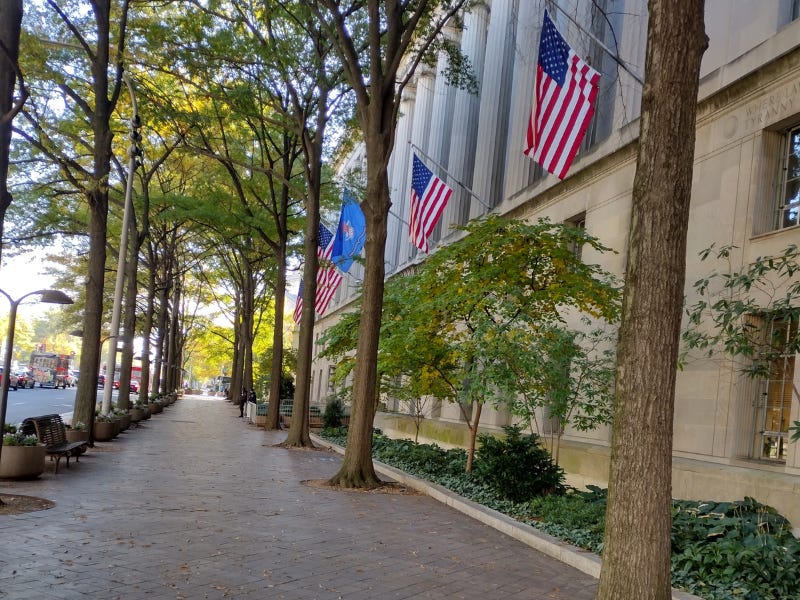We live at a time when narratives and raw emotion have supplanted the truth. One area where this has become evident is with crime statistics. Politicians, media outlets, and even some in police command positions tout numbers and graphs showing crime is down. But should we believe them?
The truth is that the numbers fed to the public don’t always align with the reality on the ground.
There are several reasons why this is happening, and I’ll illustrate the main reasons in just a moment. Before starting, I’d like to welcome anyone in law enforcement or with knowledge on this subject to correct me or add to this conversation.
I also want to be explicit that I don’t fault rank-and-file police officers for any of this. They’re doing the very best they can given the environment they’re working in.
With that,
There’s a Gap in Federal Reporting
There are two main federal agencies tasked with monitoring national crime data, and there is a disconnect in their numbers.
One of these is the Federal Bureau of Investigation’s (FBI) Uniform Crime Reporting (UCR) program. It tallies the number of crimes that law enforcement agencies report to them every year.
The other is the Bureau of Justice Statistics’ National Crime Victimization Survey (NCVS). It asks an estimated 240,000 individuals each year whether they’ve been the victim of a crime.
There are more people reporting to the NCVS that they’ve been victimized than the UCR is reflecting. Between 2021 and 2022, the rate of violent crime purportedly fell by about 2%, yet NCVS recorded a rise from 16.5 incidents to 23.5 incidents per 1,000 individuals.
Why this is happening
Not all of the nation’s 18,000 law enforcement agencies report their crime data to the FBI.
In 2019, 89% of police agencies submitted crime data. Then there was a drop.
In 2021, fewer than 63% of agencies submitted data, including those in Chicago, Los Angeles, and New York City.
These gaps are, in part, due to the FBI’s 2021 mandate that all law enforcement agencies transition solely to the National Incident-Based Reporting System (NIBRS). NIBRS allows agencies to provide more detail about crime and provides a universal data set. It also, however, requires extensive training, certification, and technological upgrades, which makes compliance difficult for police departments experiencing staffing challenges.
In 2022, there was a slight improvement; 69% of agencies submitting data. This is still inadequate.
There are Gaps in Data That Law Enforcement Agencies are Providing to the Federal Government
There is also a misalignment between the numbers that agencies are submitting and that which federal reports are reflecting.
Journalists found the following, for example.
The city of Baltimore reported 262 murders in 2023, while the FBI reported that there had been 225 murders.
Nashville data shows that 6,900 aggravated assaults occurred in 2023, while the FBI counted 5,941 assaults.
The Milwaukee Police Department reported a 7% increase in robberies, while the FBI showed a 13% drop.
There are Inconsistencies in Reporting by Police Departments
I want to be clear that I’m not faulting rank-and-file police officers for this dynamic. Coupled with staffing shortages, officers are overwhelmed by an increasing number of high-priority calls, which translates to less time to complete investigations and write detailed reports. Some of this, however, may also be politically motivated at the command level.
Down charging crimes
There have been hearsay reports that at least some police departments down charge more serious crimes to lesser offenses. Although this is a difficult metric to quantity because agencies will not freely admit that they engage in this practice, at least one investigation found that between 2012 and 2013, the Los Angeles Police Department misclassified nearly 1,200 violent crimes as minor offenses.
Taking advantage of federal loopholes
Some agencies may be using cracks in the federal reporting system that distorts crime data. An agency, for example might report a rape and murder as just a murder.
Changing city dynamics
Given that cities are rapidly changing, comparing crime data from previous years is tricky. For example, many citizens and retailers are leaving big cities because of unchecked crime, which means there are fewer victims from which to make accurate comparisons.
Fewer Citizens are Reporting Crime
As recently as 2022, only 42% of violent crime victims and 33% of property crime victims contacted the police.
Why this is happening
In short, some communities have come to the conclusion that calling the police is futile. Again, I want to emphasize that this is not law enforcement’s fault. The fact is that fewer available officers means that there simply aren’t enough resources to handle every call, including those that are potentially life threatening.
Consider the city of Chicago, where citizens reportedly have a 50 / 50 chance of receiving police assistance if shot, robbed or assaulted.
With these types of numbers (coupled with a decrease in prosecutions), communities begin to feel that calling the police is a waste of time, especially for “lesser” crimes.
Then there are self-reporting platforms
Many police departments provide online platforms where people can self-report crimes. The problem is that not everyone has access to a computer or feels confident using online reporting technology, or they may get frustrated with the process. So these crimes may go unreported.
Police are Making Fewer Arrests
Consider that in 2022, just 8.4% of all violent crimes and 1.4% of property crimes resulted in arrests in cities with populations of at least one million. And not all of these arrests resulted in charges.
Why this is happening
This can primarily be attributed to severe police staffing shortages, as well as departments being tied up with bureaucratic red tape like federal consent decrees and mandates at the municipal levels. They limit a police agency’s ability to make arrests or perform certain duties (think foot chases). In this environment, cops also realistically fear being indicted for performing their legitimate duties and have little support, so they may not be willing to take the same risks as they once did.
About Murder Rates
Because murders are high stakes crimes that tend to get reported, data for this category may be more accurate. Even so, last year’s murder rate was still 7% above 2019 rates. One possible reason this number isn’t higher is because of medical advances that have increased survival rates, even from severe trauma.
Parting Thoughts
Despite what politicians, leadership, and media outlets may lead us to believe, the reality is that crime is not down. Behind all of those charts and graphs (often based on self-selected parameters), the truth is that criminal activity, including violent crime, has increased from pre-pandemic levels.
When the truth is distorted, it’s tough to get an accurate picture of how a community, city, or nation is faring. It then becomes difficult-to-impossible to write policies and budgets that benefit communities.
Also keep in mind that statistics are one-dimensional. Behind the numbers (both reported or unreported) are flesh-and-blood victims whose lives have been upended. There are no data sets, graphs, charts, or press conferences that can adequately illustrate the horror someone (and their loved ones) experiences after being victimized.
It’s the truth that will lead to meaningful solutions, yet it seems to be in short supply these days.
I would love to know your thoughts on any of this.
For the Blue is a solutions-based initiative. I’m just an American patriot asking questions. I don’t work with any political party and I answer to nobody. For me, the health of the nation, due process (including for police officers), the rule of law, and respect for individual liberties, will always transcend party affiliation. I welcome your thoughts, even if you disagree; though personal attacks will be ignored. You can reach me at fortheblue@substack.com.










under UCR, only the most severe crime gets reported. so for instance, if someone broke into a home, raped the homeowner, murdered them, stole their car and fled. it would be counted as a murder. there's all kinds of weird rules for counting up crimes in it. I used to compile some of the stats.
the bigger prob with UCR is the "safe cities" that prize their low crime rep. so... sometimes a robbery is looked at and it's decided that maybe it was a misdemeanor assault and a theft. theft looks better on crime stats than robbery. burglary maybe it's a property damage (part 2 crime) and a theft. you can see how a mayor or a chief could decide that's the best course of action.
NIBRS is intended to fill the gaps by counting crimes and incidents. but, as you said, requires training and tech upgrades.
short staffing is tough. when I was on the job, we patrolled a very rough city one summer. on my midnight shift, often it was just two of us. this has been years ago, but when we were that short, things got resolved without reports.
many cities, see Philly or stl, are only responding to certain types of calls. others get sent to an operator to take a phone report. when I lived in stl, my car was broken into 3-5x a year. before I was a cop, i made one report--realized no one cared and quit calling.
I agree with your read. crime is up, reporting is down and the media is laying cover in an election year. bad times
Spot on! The claim that crime is down is dishonest, and a dangerous punch in the gut to the line officers who are out there fighting actual crime. True crime numbers are not only a report card for a citizen to understand their safety level, but also justification for an agency to ask for state/local money to hire more officers, particularly in high crime areas where they are needed. Citizen reports of crime is down and so are the methods that an agency uses to report. My guess is that most agencies know of their changes, but find it too difficult to explain to the public, so they stop reporting until this "blows over" or until they are mandated. One category that can't be manipulated is the number of officers assaulted or killed by violent acts. That could serve as a barometer of whether the overall stats are being honestly reported in an area.